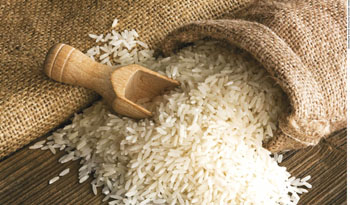THE RICE CRUNCH
SELF-SUFFICIENT NO MORE
Zulfath Saheed digests recent developments in the domestic rice industry

Asia is often referred to as ‘the rice bowl of the world’ with nine of the leading 10 rice-producing countries being from the region – with China at No. 1 – and its inhabitants generally considering it to be a staple of their diet.
According to the latest available data of the Food and Agriculture Organization (FAO) of the United Nations, Sri Lanka produced nearly 3.4 million tonnes of rice (paddy) in 2014, making it the 20th-largest producer of the crop globally – albeit trailing behind the likes of India (No. 2), Bangladesh (No. 4), Pakistan (No. 14) and Nepal (No. 17).
But the agriculture industry as a whole was brought to a virtual standstill on account of the extended drought in Sri Lanka in 2016 and earlier this year. One of the worst-affected segments was the island’s rice industry with the drought (the most severe in 40 years) severely disrupting the traditional crop seasons.

POLICY DECISIONS Despite public assurances by government officials that there would be no rice shortage in the local market, steps have already been taken to expedite imports to the country.
Neighbouring nations have also stepped up efforts to support Sri Lanka with India pledging to donate water bowsers and rice as immediate assistance for drought relief. And five companies in Myanmar set to export 50,000 tonnes of rice to our island-nation by June.
In early February, the government decided to impose a maximum retail price (MRP) on imported rice under which the MRP for a kilogramme (kg) of imported nadu and samba rice was set at Rs. 70 and 80 respectively. These measures were referred to by government sources as temporary steps to mitigate the crisis.
IMPORT RESPONSE Meanwhile, in December last year, the Ministry of Finance announced measures to import more than 250,000 tonnes of rice to maintain a buffer stock for a period of one and a half months to avert a possible shortage during the first quarter of 2017 with the country’s rice production expected to drop due to the severe drought.
The Finance Ministry was also reportedly considering tax concessions on rice imports to help mitigate the effects of the drought on the domestic market.
SUPPLY ELEMENTS Rice is considered the staple food of Sri Lankans. Paddy is cultivated as a wetland crop in all districts in the island and the total land allocated for this purpose is estimated to be in excess of 700,000 hectares (ha).
There are two cultivation seasons, namely Maha and Yala, which are synonymous with the twin monsoons. The Maha season falls during the north-east monsoon from September to March, while the Yala season commences in May and ends in August.
When the crop is sown and harvested during these periods, the particular season is defined. But the entire area devoted to paddy is not being cultivated due to a number of reasons such as a shortage of water during the seasons, unsettled conditions on the ground and so on.
PRODUCTION ESTIMATE The paddy extent – i.e. asweddumised (land prepared in rectangular flat terraces enclosed by earth bunds for cultivation), sown and harvested on a complete enumeration basis – commenced in 1951.
This method of data collection has since been continued every season with the assistance of Agricultural Research and Production Assistants (ARPOs) or Grama Niladhari (GN) officials who act as primary reporters.
Sri Lanka’s average paddy yield at district level is estimated by means of a sample survey that’s known as ‘the crop-cutting survey’ initiated with the assistance of the FAO in 1951. A sample of 3,000 villages for the main season (Maha) and 2,000 villages for the second season (Yala) are selected to carry out experiments. An estimate of paddy production is obtained for each season as a product of the acreage harvested and average yield.
SEASONAL FORECAST Paddy cultivation progress in Sri Lanka at end-December achieved 61 percent of the target, according to the Department of Agriculture. It notes: “Drought condition from the beginning of the season delayed and lowered the paddy cultivation progress in major paddy-growing areas especially in the North-Central Province, North-Western Province and Mahaweli systems.”
This cultivation progress is 35 percent less than the total sown extent of the previous Maha season. It is also 32 percent less than the average sown extent of the last three Maha seasons.
Forecast paddy production for the Maha 2016/17 season stands at 1.36 million metric tonnes with the Department of Agriculture pointing out that “the rice production forecast of Maha 2016/17 would be sufficient for household rice consumption only for four months.”
Sri Lanka has a historical claim to fame as ‘the granary of the East.’ But it would appear that the effects of climate change (let us not forget the devastation caused by the May 2016 floods) have brought into question the island’s claim to rice self-sufficiency.




